Before screens, we played I Spy and shouted “Slug Bug!”
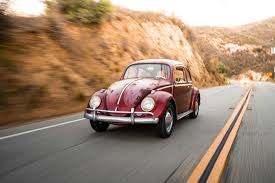
Long before tablets and backseat headrest screens, road trips were built on imagination and low-tech games. We played “I Spy with My Little Eye,” shouted out geography answers like “Alabama!” and competed to find out-of-state plates or spot VW Bugs in passing traffic. Some of us kept a running tally. Others just slapped our siblings’ arms for fun. But when we weren’t playing car-seat games with nothing but our voices and the view, we pulled out our travel toys—the gadgets, puzzles, and pocket-sized games that turned long drives into unforgettable fun.
1. Travel Bingo
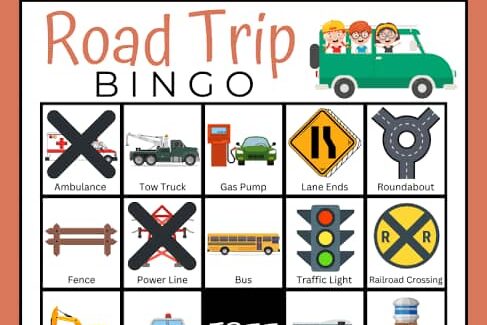
When you’ve run out of things to stare at through the window, Travel Bingo turned passing scenery into competitive fun, spot a cow, windmill, or license plate from another state, mark a square, and yell “Bingo!” Made popular in printable and reusable card form since the 1970s and often available in travel‑specific sets, it became a pandemic of entertainment for families in motion. Portable, educational, and silly in equal parts, it got everyone hunting for mundane roadside oddities and shouting out patterns before the scenery blurred.
2. Game Boy
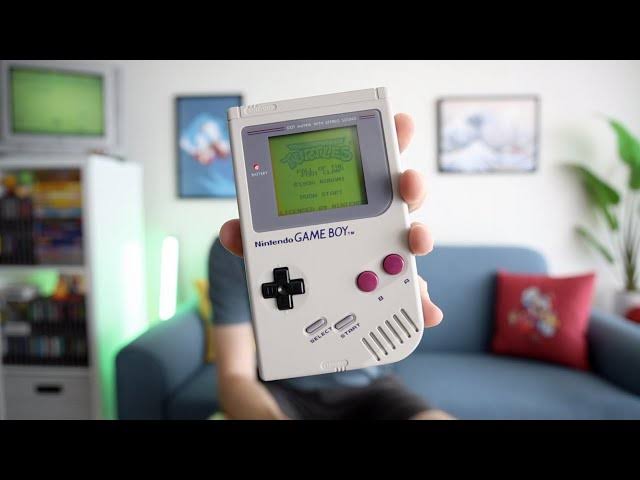
With four AA batteries, a monochrome LCD screen, and the bundled smash‑hit Tetris, the Game Boy became the ultimate travel sidekick starting in 1989. Sporting a rugged design by Gunpei Yokoi and a smart philosophy of “do more with less,” it outlasted its technically superior rivals thanks to simplicity, durability, and imaginative cartridges like Pokémon, which encouraged addictive swapping with roadside pals. Even on rough CRT-free bus trips, its laughably pixelated world felt magical, and enduring.
3. Etch A Sketch
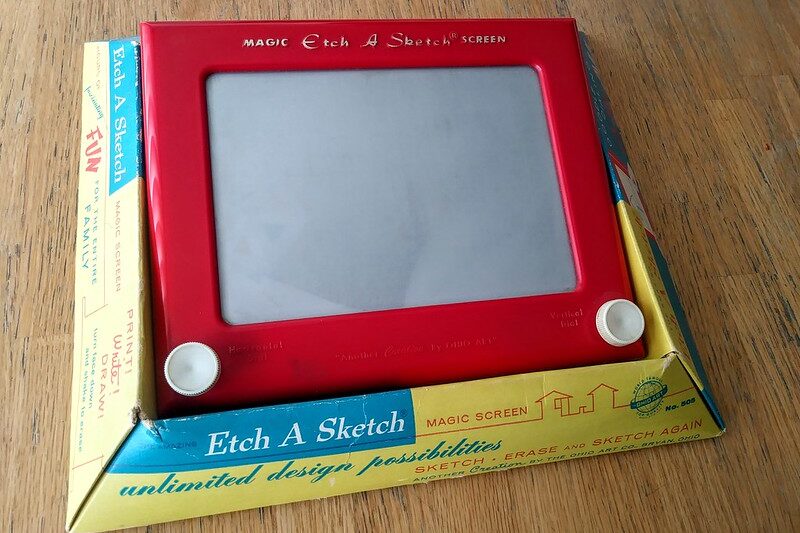
With that satisfying click‑click and a gentle shake to erase, the Etch A Sketch transformed doodling into an art form on long drives. Invented in France in the late 1950s by André Cassagnes and popularized in the U.S. when Ohio Art released it for the 1960 holiday season, it sold millions due to its clever mechanical design using a stylus guided by two knobs over aluminum powder. Car trips quietly turned into mini art galleries as kids competed to draw zany faces, road signs, or impossible mazes, all while hoping the car didn’t bounce mid‑sketch.
4. Waterful Ring Toss
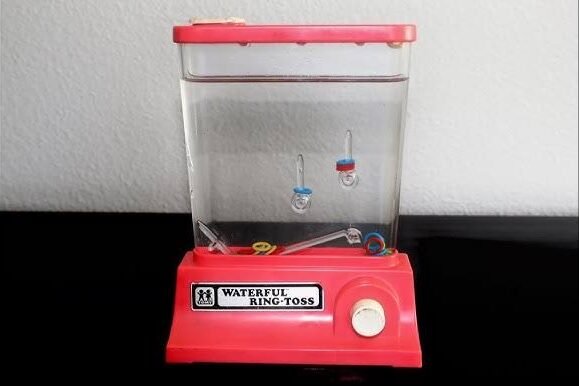
This simple handheld wonder was a staple at gas‑station display shelves, and for good reason. Just press the button and watch the little plastic rings tumble over a peg inside the water‑filled tube. No batteries, no mess, and hypnotic enough to keep kids, or adults, busy for ages. The bright rings and slow motion made it ideal for a front‑seat fidget fix. It never judged if you missed, and it was tiny enough to slip into a seatback pocket without weight or noise complaints.
5. Mad Libs
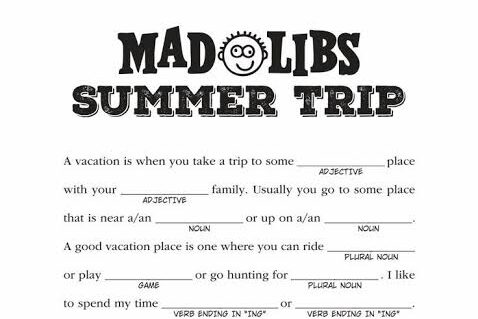
These cheeky fill‑in‑the‑blank stories turned grammar practice into infectious giggles, especially when siblings volunteered absurd nouns or verbs. Created by writers Leonard Stern and Roger Price in the early 1950s and first sold in 1958, Mad Libs sold over 110 million copies across dozens of themed editions (holidays, travel, history). On road trips, one person read the prompts aloud (“an adjective,” “a celebrity name”), the others supplied words, often inappropriate or goofy, and then you read the story with delighted howls: “The dinosaur wore polka‑dotted sneakers at IKEA!”
6. View‑Master

The red plastic binocular‑style viewer and its colorful reel discs served as a time‑traveling window in the back seat. Originally launched in 1939, View‑Master reels often featured travel destinations, Disney parks, national monuments, or wild animals, as 3D images you clicked through one after another. Kids could “visit” Yellowstone or the pyramids just by peeking into the toy between nap breaks. No batteries, no screens, just mesmerizing stereoscopic scenes, reusable reels, and the thrill of turning each golden tab to a surprising new view.
7. Sticky Hands
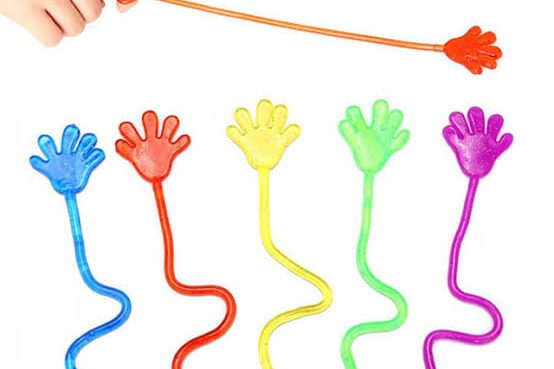
Stretchy, rubbery “hands” flung from vending machines or cereal-box prizes in the 1980s, Sticky Hands were a messy masterpiece of cheap fun. Made from tacky elastomer, they could cling to car windows, walls, or unsuspecting siblings, until they collected enough hair and dirt to lose all grip. Online nostalgia threads still glow with memories: “Covered in hair and dust in an hour… Then they became weapons” Cleaned with dish soap, they briefly regained their stickiness, only to become gross again. These low-tech toys embodied the blissful short-lived joy of childhood car rides before screens.
8. Spirograph
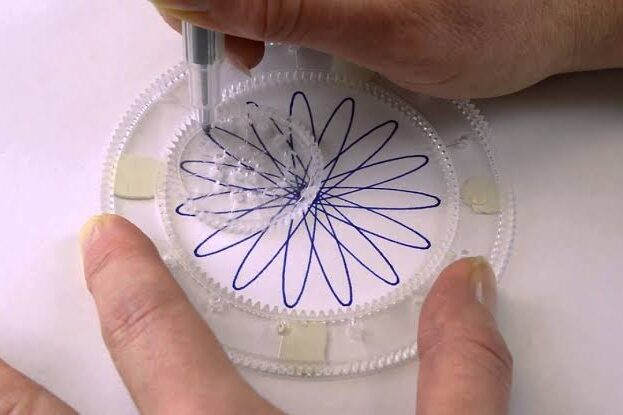
What looks like a math lesson became mesmerizing chaos in the car, Spirograph kits were a staple of long trips. The mini or travel versions offered a handful of gears, a ring, and colored pens to trace hypnotic trochoid patterns on paper or clipboard. Invented in 1965 by Denys Fisher and made portable for decades afterward, they offered a quiet focus that drowned out bumping along roads and seasick yawns. As Reddit users recall: “Sat for hours making spiro designs… before I knew they were fractals”
9. Magic Slate
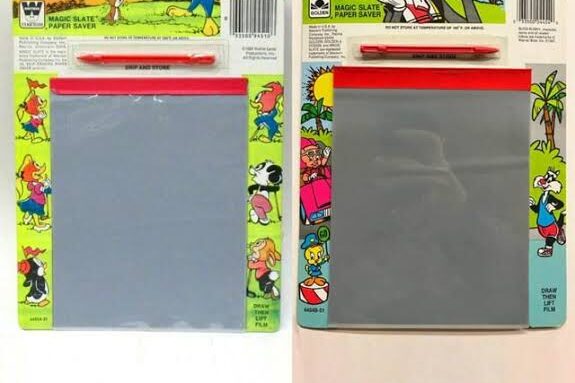
This reusable doodle pad, known simply as Magic Slate, offered erasable fun without ink or mess. A clear plastic sheet pressed against waxy backing to reveal scribbles and then lifted cleanly away when lifted, erasing the drawing instantly. Lightweight and silent, it let kids record secret messages, cartoon scenes, or doodle-only-to-erased masterpieces during long flights or road trips. Cheap, portable and virtually indestructible, it quietly outlasted more elaborate gadgets, and even served as Cold-War silent messaging tool.
10. Rubik’s Cube
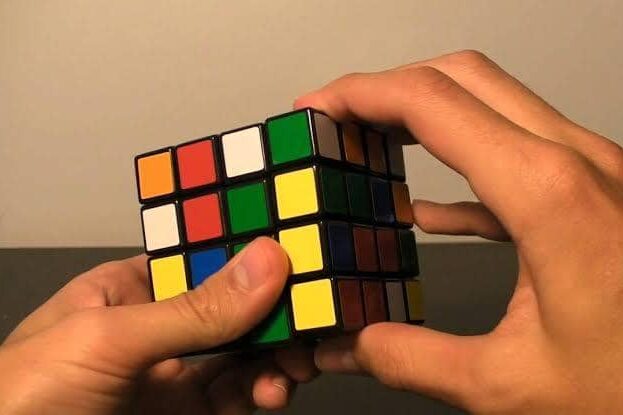
The classic 3×3 Rubik’s Cube, named after its Hungarian creator in 1980, was the ultimate travel puzzle: satisfying to fidget with, skillfully maddening, and perfectly size‑and‑weight for the back seat or plane pocket. From 1980 to 1983 it dominated global toy sales, reportedly over 200 million units, and gave birth to speed‑cubing contests by mid‑1982. Many younger kids “solved” theirs by peeling off or rearranging the colored stickers (you know who you are!), trading long‑term challenge for instant satisfaction.
11. UNO Travel Edition
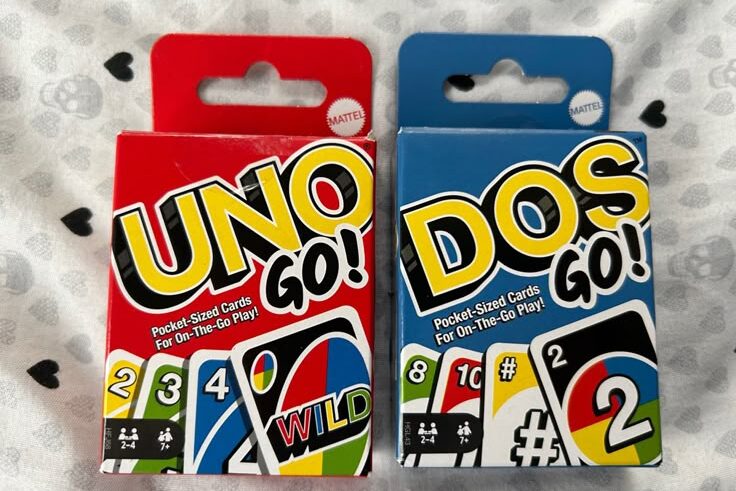
With its 56 compact cards instead of the full 108–112, UNO Travel (aka UNO Go! in the U.S. or UNO Express in Europe) made grief-free glovebox game nights completely doable on planes, trains, or minivans. Players begin with just 5 cards, and Draw‑2 replaces Draw‑4 so the game stays light and tight. The rules are the same, but everything shrinks, cards half size, quick rounds, and no loose pieces rolling around. Reddit users cite it as “exactly the same … both 56‑card versions of UNO” with the only real difference being card size, and portability that fit into pockets or binocular lanyards. Its tin or sleeve often became the unofficial summer travel kit’s highlight.
12. Wooly Willy
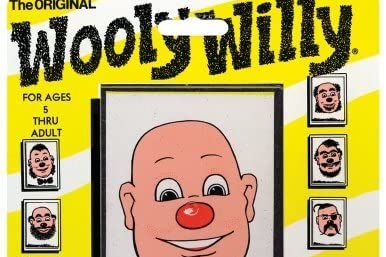
This simple magnetic doodle kit, replicating a bald man named “Willy” under a plastic dome filled with iron filings, thrived as a gas‑station impulse buy and a chaotic road‑trip favorite. Use the wand to drag “hair” across his face to form mustaches, grills, eyebrows, or gravity‑defying afros. It launched in 1955 and remains in production with over 75 million units sold, earning a spot on the Toy Industry Association’s “Century of Toys” list. It stays silent, very low tech, and once sticky even with dirt or hair clinging inside, it still elicited giggles or sibling arguments by the mile marker. Cheap, tiny, and endlessly re‑doodleable, classic back‑seat entertainment.
13. Brain Quest Cards

Famously billed as “not school, it’s a game,” Brain Quest flashcards quizzed kids on spelling, math, science, and more in a playful way. Created by French publisher Play Bac and licensed to Workman Publishing, the English version sold over 4 million copies in its first year and even topped the New York Times’ children’s bestseller list. For travel, families tossed a small stack into cupholders or seatback pockets. In between sightseeing or after curfew, decorators of vacation to‑dos read out a question, waited for the guess (lifeline: “twist the card”), and revealed the answer, quiet, screen‑free, and educational in disguise.
14. Mini Simon Game
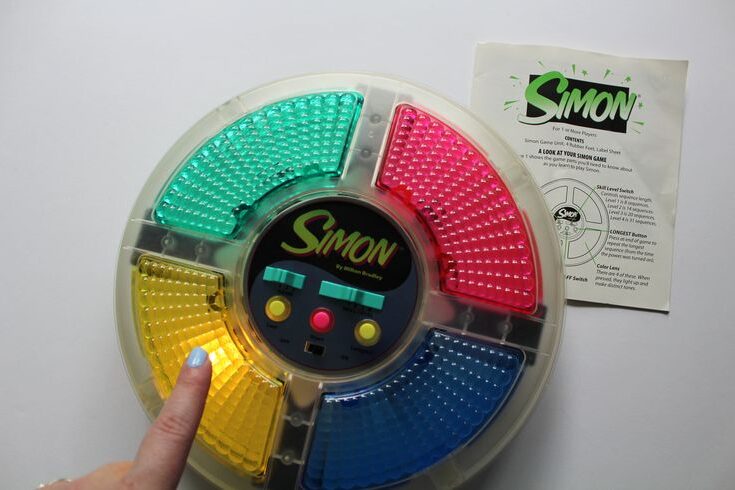
This pocket‑sized version of the classic memory‑match Simon (originally released in 1978) offered four glowing buttons and escalating tone‑sequences, only in a card‑pocket‑friendly disc. Depending on the era, smaller variants called it Simon Micro/Micro‑Series or the “world’s smallest Simon,” under two inches across but storing up to 73-pattern memory challenges. Parents and kids called it “loud enough to annoy the front seat,” but it fit easily in a drink holder. Replay‑based puzzling distracted tens of miles of motion sickness, boredom, and sibling whining, so memorable that decades later it’s still in Amazon vintage game reviews for travel nostalgia.
15. Speak & Spell
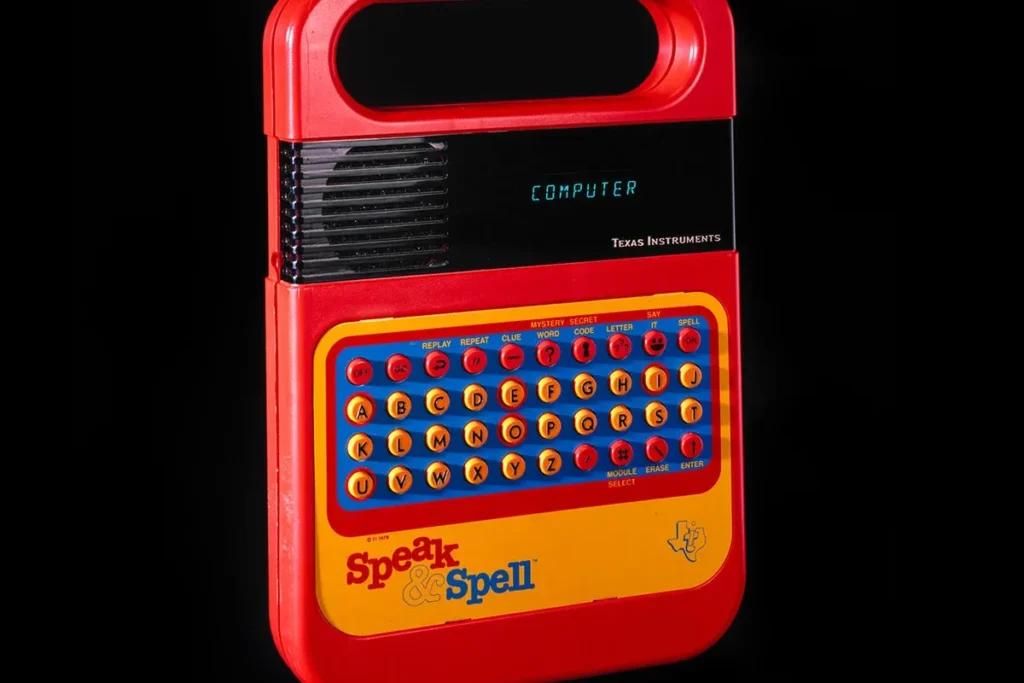
This brick‑style, keyboard‑driven talking toy from Texas Instruments brought real speech synthesis to spelling challenges in 1978. With voice prompts like “Spell giraffe” and an American English‑accent robotic narrator, it turned rote drills into game challenges, even adding a “secret code” where letters became funny new words. Weighed down by a built‑in handle and a few AAs, Speak & Spell was a rare heavy‑duty gem for planes or parked back‑yards: educational, durable, buzz‑and‑bleep engaging, and unforgettable to that generation who would still say in their heads “That is incorrect… the correct spelling of…” just for fun.
This story 15 Travel Toys Every 80s and 90s Kid Grew Up With (And a Few That Were Actually Pretty Great) was first published on Daily FETCH


